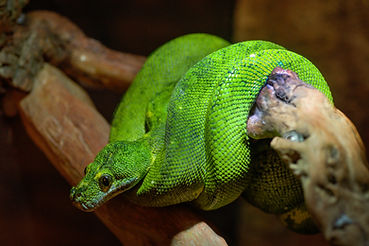The Reptiles
By: Megan & Kristen
CALL US: 123-456-7890
 |
|---|
Welcome to the world of reptiles! Click and explore our website. Enjoy!
Phylum Chordata: Class Reptilia
Loggerhead Sea Turtle/ Caretta caretta
Descriptions

Wild Lizard/ Lacertilia
Feeding & Digestion
The reptiles systems is similar to humans. It consists of the mouth, salivary glands, esophagus, stomach, and intestine. Most reptiles are carnivores.
Nervous System
The nervous system is similar to the amphibian's but is slightly larger. They have the same organs as mammals but some species lack certain functions.
Reproduction
Most reptiles lay eggs. Sea turtles lay eggs on the beach. Some snakes and lizards gives birth to live young.
Circulation
Most have a three chambered heart system that directs blood to the lungs. Modern reptiles don't have the capacity for fast movement like birds or mammals.
Fun Facts
-
Reptiles are covered in scales or have a shell
-
The first reptiles evolved about 320 million years ago
-
More than eight thousand of reptiles
-
Reptiles are among the longest lived species
-
Snakes and Lizards use their tongues to smell
-
A snakes skull is made up of many small bones-interconnected into a flexible fashion
-
Reptiles have sweat glands to keep cool and dry
-
Some species of gecko use their tails as a defense
-
About 1-5 of all snakes give birth instead of laying eggs
-
The tortoise can live longer than 150 years
Excretion
Very little is known about excretion in reptiles. Excretion is the process of eliminating waste matter.
Movement
Reptiles are slow, they use forms of locomotion. They tend to use their bodies and spines to move.
KEEP
IN TOUCH

Saltwater Crocodile/Crocodylus porosus
Green Tree Snake/ Dendrelaphis punctulata
901 NE Douglas St, Lee's Summit, MO 64086
OUR ADDRESS
CONTACT US

Reptiles are cold blooded, which means they can regulate body temperature. They use this to survive in extreme conditions, such as dessert, heat, or cold. Depending on where they live, they may be active during certain seasons. Reptiles have adapted to certain surfaces such as rock, lose sand or water.
Thin skin with little insulation is what cold blooded reptiles have. They have to be surrounded by warm objects in order for for themselves to stay warm. Reptiles have devolved protective adaptations such as camouflage, bright colors, disposable tails and the ability to find hiding places.
Charatistics of Reptiles
-
Cold blooded
-
Lay eggs
-
All have backbones
-
Scales
-
Carnivores
About Reptiles

